Optical design software
- Détails
- Publié le lundi 15 mai 2017 08:00
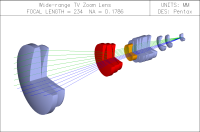
Lambda Research has released OSLO 7, which contains significant updates and enhancements. OSLO 7 includes Windows 10 support, improved Zemax and CodeV import, and STEP export that supports all surface types as well as updated Ohara, Hikari, Hoya, and Schott glass catalogs direct from the manufacturer. In addition to classical lens design features, OSLO (Optics Software for Layout and Optimization) is used to simulate and analyze the performance of optical systems by combining advanced ray tracing, analysis, and optimization methods with compiled macro language.
Ultra-black coating
- Détails
- Publié le vendredi 12 mai 2017 08:00

SBIR and Acal BFi announce a new ultra-black surface coating technology that improves infrared emissivity in the midwave-infrared (MWIR) and longwave-infrared (LWIR) spectral wavelengths. In the MWIR (3-5 µm), emissivity is > 99.8% (± 0.1 %); in the LWIR (8-12 µm) emissivity is > 99.5% (± 0.15%). Developed for space-borne imaging applications, Vantablack surface coating material offers exceptional IR absorption and excellent thermal, mechanical and environmental stability. The new material was recently deployed on an Earth-observation satellite.
Femtosecond lasers
- Détails
- Publié le jeudi 11 mai 2017 08:00

Coherent has extended the performance of their Monaco series of industrial-grade femtosecond lasers by increasing their adjustable pulse repetition rate to a maximum of 50 MHz. A new high energy Monaco provides up to 60 µJ/pulse in the near infrared (1035 nm), or, optionally 30 µJ in the green (517 nm). These improvements provide enhanced performance in precision materials processing applications, particularly for delicate and/or tough materials, and also deliver increased frame rates in demanding multiphoton microscopy imaging applications. All Monaco lasers produce a high quality (M2 < 1.2) beam, enabling tight focusing for high brightness and high spatial resolution. Additionally, the pulsewidth can be user set from under 400 fs to over 10 ps.
Fiber-coupled modulators
- Détails
- Publié le mercredi 10 mai 2017 08:00

Fiber-Q devices enable high speed optical pulse picking at infrared wavelengths for all-fiber laser systems. They offer high extinction ratio, low insertion loss, and excellent stability in both polarization maintaining (PM) and non-PM formats at modulation frequencies up to 80 MHz for visible and infrared wavelengths. Compact, low-profile package allows integration into all-fiber and OEM systems, including medical laser systems.
Dedicated fs laser
- Détails
- Publié le mardi 9 mai 2017 08:00

Amplitude extends its industrial femtosecond laser product range with the Yuja, a versatile high energy laser especially designed for quality cutting and drilling of delicate materials. Delivering more than 100 µJ pulse energy, with a flexible repetition rate from 100 kHz to 2 MHz, the Yuja is ideally suited for the high speed drilling of various geometries that require micrometer-range accuracies. Its pulse duration of <500 fs allows for high quality processing of almost all materials with low thermal distortion and minimal heat-affected zones. The Yuja allows optional automated wavelength selection and processing in IR, Green and UV. Other available features include burst-mode operation or a dual output version.
100 W fs laser
- Détails
- Publié le lundi 8 mai 2017 08:00
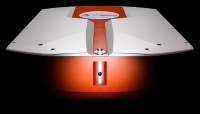
Amplitude introduces Tangor, an industrial femtosecond laser with average output power in excess of 100 W. Tangor produces 400 fs pulses, peak powers greater than 500 MW, single-shot to 2 MHz repetition frequencies, and superior beam quality. By combining a fiber seeded oscillator with a crystal-booster amplifier, Amplitude has produced a hybrid fs laser platform that delivers industry leading average power with high pulse energies. These innovations, combined with high pulse repetition rates, burst mode operation, and pulse synchronization allow for straightforward integration in complex scanning and beam delivery systems. The addition of harmonic generation into the green and ultraviolet allow for processing of a wide range of complex materials.
Triple mirrors
- Détails
- Publié le vendredi 5 mai 2017 08:00

Laser Components developed a new coating process for so-called triple mirrors that makes it possible to apply this complex layer design in one pass. Coatings for three wavelengths used to have to be manufactured in two passes. The new method not only results in higher specifications, but it also has the additional advantage of a shorter duration of production. Furthermore, the new applied coating unit contains more substrates than before, allowing larger amounts to be produced. This positively affects the unit price. Triple mirrors are used, for example, in Nd:YAG laser systems that emit at the fundamental wave-length 1064 nm (IR) and have harmonic waves at 532 nm (green) and 355 nm (UV). Customers can pick their wavelengths individually – many combinations are possible.
APD arrays
- Détails
- Publié le jeudi 4 mai 2017 08:00
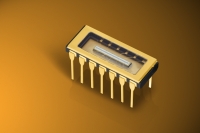
APD-arrays are now available from Laser Components, enabling new applications in LIDAR and ACC, adaptive cruise control. A typical 12-element array will be presented at Laser World of Photonics on June 26–29, 2017 on booth B3.303, and a preliminary datasheet is available now. Arrays will be offered on a custom basis with number and dimension of the individual elements tailored to the specific requirements of each application.
InGaAs camera
- Détails
- Publié le mercredi 3 mai 2017 08:00
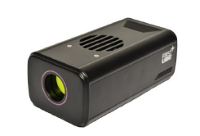
First Light Imaging complete its Infrared range of scientific cameras with C-RED 2, a very compact high-performance InGaAs camera. C-RED 2 outperforms the capacities of its 640 × 512 InGaAs 15 µm pixels high resolution sensor, offering a breakthrough frame rate up to 400 images per second full frame while being ultrasensitive: from 10 to 30 electrons read out noise at full speed. The sensor embeds an electronic shutter with an opening width lower than 1 µs. C-RED 2 is designed for astronomy, bioimaging or industrial applications, in very low light conditions and in any environment.
Micro spectrometers FT-IR
- Détails
- Publié le mardi 2 mai 2017 08:00
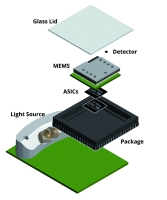
Si-Ware Systems (SWS) introduces the first integrated micro-spectrometer for broad industrial and consumer use. Delivering the same functionality as conventional “bench-top” spectrometers in labs, the integrated NeoSpectra Micro brings to end-users the ability to immediately quantify composition, detect impurities and ascertain quality, speeding analysis of samples from days to minutes without the need for offsite lab verification.
Laser combiner
- Détails
- Publié le jeudi 27 avril 2017 08:00
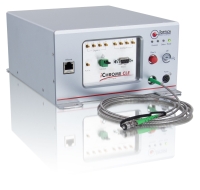
Toptica’s NEW iChrome CLE, includes four laser sources with output power up to 20 mW max. All integrated wavelengths are controllable via a unified user interface (analog and digital inputs, as well as RS232 and Ethernet). Providing 405 nm, 488 nm, 561 nm et 640 nm, iChrome CLE is an excellent laser light source for microscopy, especially optimized for confocal microscopy. The combinaison of these colors enables excitation of the majority of popular fluorophores with only one fully integrated device. Toptica also provides a ready-to -use, user friendly control software.
Picosecond laser
- Détails
- Publié le mardi 25 avril 2017 08:00
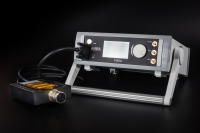
The PiXea is a stand-alone picosecond laser dedicated for the most demanding industrial and scientific applications in the 375 nm to 2 μm spectral range. This very-low timing-jitter laser from Aurea Technology performs very sharp pulses width down to 20 ps with a continuously tuning of the repetition rate up to 100 MHz and a peak power up to 500 mW. Very well-designed, the outstanding-performances and the modern interfaces of the PiXea make it an essential tool for any accurate time analysis, characterizations and laser seeding.
Power pump
- Détails
- Publié le lundi 1 mai 2017 08:00
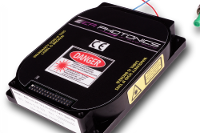
LEA-Photonics is proposing a high power multi pump. Raman fiber amplifier for ultra long haul transmission systems is available in very compact modules or in a highly-developed 1U rack with SNMP supervision option. They are optimized to amplify DWDM signals over the C-Band with flat gain. The Raman amplifiers provide high output pump power using wavelength-combined 14xx nm pump laser diodes. They also incorporate automatic power reduction (APR) when the output fiber is not properly terminated or optically disconnected. Finally, the pump power ratio is tunable for gain optimization.
Piezo stage
- Détails
- Publié le vendredi 28 avril 2017 08:00
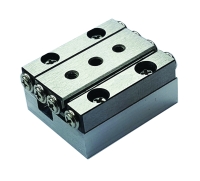
Micronix USA is now able to offer closed loop miniature piezo stages and a matched controller at the low price of typical low cost open loop stepper systems. Starting at 20mm x 18mm x 10mm (l x w x h), the new low cost PP-18 offers cross-roller bearings to assure high stiffness and is driven by our patented multi-phase piezo motor resulting in high speed (> 2 mm/s) and high blocking force (> 1.5 N). A linear encoder with 40nm resolution is standard on all PP-18 stage to assure repeatability.
Mid-IR supercontinuum laser
- Détails
- Publié le mercredi 26 avril 2017 08:00
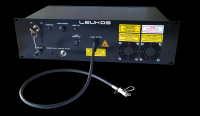
Le Verre Fluoré and Leukos have polled their respective expertise in fluoride glass and in supercontinuum generation, to deliver an innovative Mid-IR supercontinuum laser. This solution, the SM-MIR, covering up to 4.1 µm, delivering more than 700 mW, is already available at Leukos.
Calibration light source
- Détails
- Publié le mardi 25 avril 2017 08:00
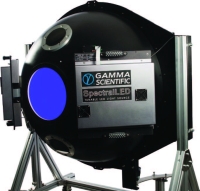
Gamma Scientific has expanded their family of SpectralLED tunable LED light sources for camera and image sensor calibration with a new system having a substantially larger output port, as well as increased output uniformity. Specifically, the new SpectralLED RS-7-2 mates up to four LED light source engines together with a 1 meter sphere that includes a 300 mm output port (other sphere and port sizes are available, as well). The result is a calibration light source for very large area detectors and large field of view cameras that delivers significantly higher brightness and approximately an order of magnitude higher radiometric stability (<0.1%) and wavelength accuracy (0.25 nm) than any competitive product.
Détecteur de contraste
- Détails
- Publié le lundi 20 mars 2017 08:00
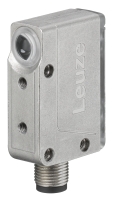
Dédié aux processus d’emballage nécessitant la reconnaissance sûre des repères sur les films, les sachets et blisters d’emballage ou les étiquettes, le détecteur de contraste KRT 18B de Leuze Electronic est équipé d’une émission de lumière multicolore − 3 leds de couleurs rouge, vert et bleu. Il détermine automatiquement la couleur offrant le meilleur contraste et la reconnaissance sûre des repères. Un réajustement automatique garantit une détection fiable même sur des surfaces brillantes ou pâles.
Détecteur de LEDs
- Détails
- Publié le lundi 13 mars 2017 08:00

Destiné au test et à la détection de tous les types de LEDs, le détecteur MÉGA FINN distribué par Cotelec permet de réaliser des mesures en 3 millisecondes pour la majorité des LEDs. Capable de détecter 2000 teintes différentes, du bleu (400 nm) au rouge (700 nm), même dans les environnements de test difficiles (signaux parasités, lumière ambiante, LED de faible intensité...), le détecteur MÉGA FINN fournit rapidement des résultats précis. Son programme d’exploitation élimine les incertitudes liées notamment aux éclairages ambiants.
Mesure de gaz
- Détails
- Publié le mercredi 8 mars 2017 08:00
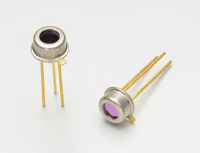
Hamamatsu propose les LED moyen-infrarouge L13771-0330M et L13454-0390M aux longueurs d'émission dans la bande des 3 µm, réalisées grâce à la technologie de croissance des cristaux. Avec une forte puissance de sortie, elles sont appropriées à la mesure de CO2, CH4 et d’autres gaz. Leur pic d’émission est respectivement de 3,3 et 3,9 µm.
Télescope à vision amplifiée
- Détails
- Publié le lundi 27 février 2017 08:00
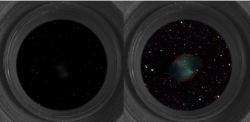
Unistellar propose le eVscope (enhanced vision telescope), télescope connecté à vision amplifiée. Une amplification de la lumière perçue à l’oculaire, associée à des contenus informatifs et interactifs, rend l’astronomie accessible au plus grand nombre. L’eVscope permet par exemple de visualiser les couleurs et les formes d’objets célestes habituellement observés sous forme de simples « tâches grises ». Il est par ailleurs équipé d’un « cerveau digital » qui lui permet de reconnaître le champ observé et d’accompagner l’astronome en temps réel en lui donnant un ensemble d’informations sur l’objet stellaire regardé (distance, type, histoire). Sa connectivité permet à ses utilisateurs de partager leurs observations et contribuer à des programmes collaboratifs de recherche en astronomie : Unistellar travaille notamment à utiliser cette capacité dans l’étude des astéroïdes avec un ancien membre du groupe de travail de l’ONU sur la défense planétaire.






